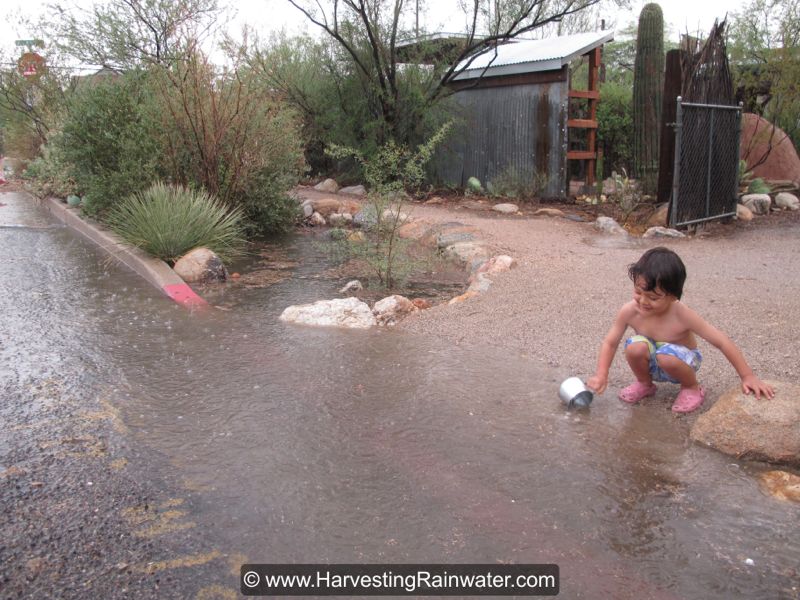Stepping Up To Look At, Discuss, and Address Climate Change
by Brad Lancaster © 2013
www.HarvestingRainwater.com

Climate change is real, it’s well underway, and we need to step up and make it a major part of the national dialog now, as we all work on solutions. The sooner we act, the easier it will be. The longer we delay, the more dramatically the difficulty increases. The better informed we are, the more effectively we can act. In that spirit:
Here are some very informative resources worth checking out which will help you grasp the problem and which offer some solutions:
1. TED talk: James Hansen: Why I must speak out about climate change
2. Bill Moyers & Company: Anthony Leiserowitz on Making People Care About Climate Change
3. “Global Warming’s Terrifying New Math: Three Simple Numbers That Add Up to Global Catastrophe—and Make Clear Who the Real Enemy Is,” by Bill McKibben. Rolling Stone, July 19, 2012.
4. www.350.org
As we increase our understanding, the more apt we will be at choosing for ourselves and our families appropriate strategies to help address not only climate change, but other issues we are experiencing now.
Some strategies/solutions that are working for me include:
• Riding my cargo bicycle as my primary means of transport around town—this has greatly improved my health and spirit, while saving me over $7,000 a year.
• Drying my clothes with an old-fashioned solar clothes dryer (a clothes line)—this actually gets my clothes cleaner.
• Passively heating and cooling my home and office with appropriate winter sun access, summer shading, and passive ventilation—this has improved our interior air quality, reduced noise pollution (from air conditioners), and dramatically reduced our energy consumption and utility bills.
• Planting food-bearing, native trees within and beside street-side water-harvesting earthworks in my neighborhood to utilize street runoff as free irrigation for the street trees—this has produced delicious locally-grown mesquite flour, cooled summer temperatures in the trees’ shade by 10? F (5.5? C), reduced flooding, attracted two-dozen different species of song birds, beautified my neighborhood, and gotten more neighbors interacting and working together as a community.
• Powering my home and office with a grid-tied solar PV system, and heating my water with a solar hot-water heater—I no longer have an electric bill, nor a gas bill (energy-conserving strategies, such as the three directly above, enabled me to reduce the needed size and cost of our solar PV system by half.
The upcoming revision of my book Rainwater Harvesting for Drylands and Beyond, Volume 1, 3rd Edition, covers these and more solution steps, especially as they relate to the harvest of rainwater, stormwater, and household greywater—along with other simple strategies (such as passive heating and cooling) we can practice at home and in our neighborhoods.
And if you’d like still more climate change resources check out the following:
• The Weather Makers: How Man Is Changing the Climate and What It Means for Life on Earth, by Tim Flannery, Atlantic Monthly Press, 2005.
• An Inconvenient Truth: The Planetary Emergency of Global Warming and What We Can Do About It, by Al Gore. Rodale Books, 2006.
• An Inconvenient Truth, video, 2006.
• Losing Our Cool: Uncomfortable Truths About Our Air-Conditioned World (and Finding New Ways to Get Through the Summer), by Stan Cox. The New Press, 2010.
• A Great Aridness: Climate Change and the Future of the American Southwest, by William deBuys, Oxford University Press, 2011.
